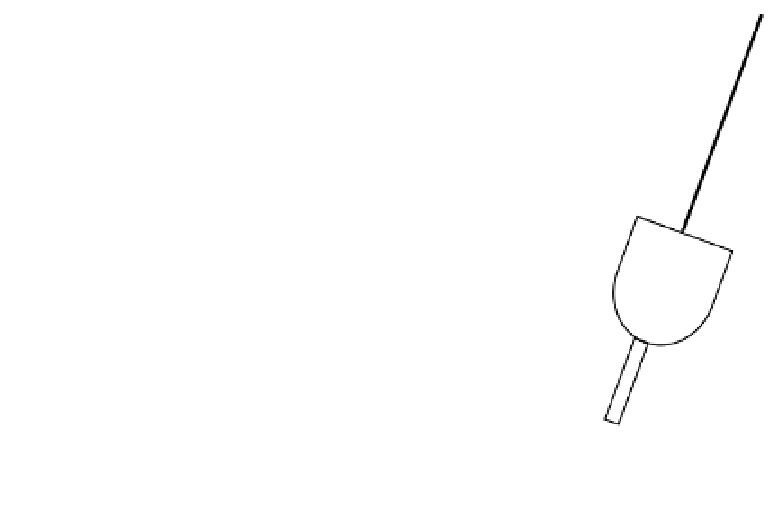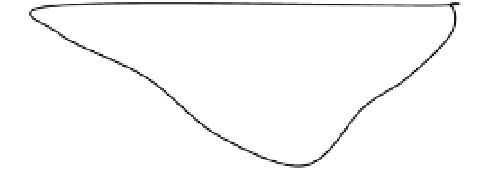Game Development Reference
In-Depth Information
Mast
F
wind
Mainsail
Jib
F
B
F
ke
e
l
mg
Keel
Figure 9-12.
A schematic of a typical sailboat
The right-hand side of Figure 9-12 shows a sideways force diagram on the sailboat where
the wind is coming from the left. The force due to the wind on the sail pushes the boat to the
right. The keel resists this movement, and a force is exerted on the keel, acting to the left. The
wind and keel forces create a torque that causes the boat to rotate, or heel, over to the right.
The reason the sailboat doesn't just topple over is because a counterbalancing torque is
generated from the buoyancy and gravitational forces. The keel of the sailboat is weighted such
that the center of mass for the sailboat will be somewhere in the keel. The buoyancy force acts
through the geometric center of the sailboat. The separation between the buoyancy and gravi-
tational force vectors is what causes the counterbalancing torque.
The real trick to modeling a sailboat is to compute the thrust force generated by the sail.
This force will depend on the direction of the wind, the magnitude of the wind, the size of the
sail, the shape of the sail, and many other factors besides. The development of a detailed model
of sail thrust force is beyond the scope of this topic. To learn more about the physics of sailing,
try
The Physics of Sailing Explained
by Bryon Anderson (Sheridan House, 2003).
The Physics of Surfing
Surfing is a sport that combines athletic ability, speed, and balance, with a little danger thrown
into the mix. In this section, we'll see a brief overview of the physics of surfing. Figure 9-13 shows a
surfer riding a wave off the coast of Southern California. It turns out that you've already learned
pretty much all you need to know to create a realistic surfing simulation, because in essence a
surfboard is a boat with a solid, planing hull.








